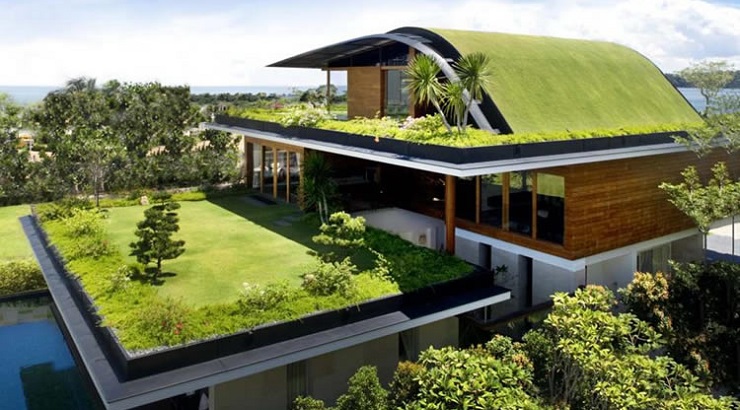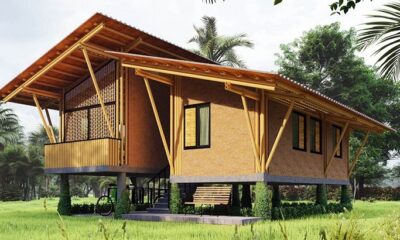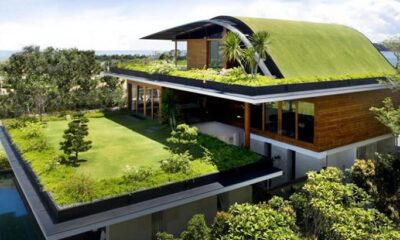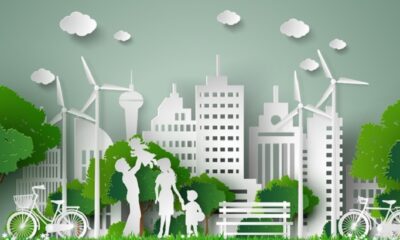Green Building
What is Sustainable Building?
A listing of the top 10 sustainable building methods.

Sustainable building is the use of environmentally friendly construction techniques to create ‘green buildings’ with limited adverse effects on the environment.
This mode of construction is aimed at reducing the industry’s impact on the environment by applying sustainable development and capitalizing on green building technology.
Here are the top 10 sustainable building techniques.
1. IoT Building Automation Systems
Internet of Things (IoT) is a giant network of connected objects, which are embedded with sensors that connect and share data with other devices and systems over the Internet.
Builders can integrate IoT with automated systems to operate structures more sustainably. Sensors in buildings can, for example, adjust the required lighting based on weather.
IoT devices such as motion detectors can also be used to switch on the lights when somebody enters a room, and to switch off when the individual exits.
This technique helps to reduce a building’s energy consumption while relieving the facility manager of the duty of manually adjusting multiple gadgets in the building.
2. Prefabricated Building
Instead of building houses from scratch, builders are increasingly buying ready-made buildings from prefab factories and shipping them to the site for assembly.
Manufacturing building materials in a controlled environment minimizes wastage of material, which cuts the industry’s carbon footprint while shortening construction timelines.
Besides, unlike the case of traditional construction where waste is taken to a landfill, additional materials produced in a prefabricated factory are recycled for use in other projects.
3. Greywater Systems
Greywater plumbing systems can be used to reduce a building’s water bills.
It works by amassing and processing household wastewater – except that from toilet streams – for reuse.
Reprocessed water is mainly used for watering gardens and supplying toilets with water.
4. Electrochromic Glass
Electrochromic glass is capable of turning opaque on external stimuli such as UV rays.
This eliminated the need for acquiring shades while helping a building to adapt to the prevailing weather conditions.
5. Green Roofs
Green roofing materials – complete with plants, grass, flowers, and other greenery – are increasingly being adopted in both commercial and residential buildings.
RELATED: How to Build More Sustainable Cities
Green roofs have the capacity to lower heating and cooling costs while improving the air quality by absorbing carbon dioxide and discharging oxygen.
Besides, stormwater is absorbed in the soil more easily than in the case of a non-green roof.
6. Synthetic Roof Underlayment
Synthetic roof underlayment – which is often asphalt-based – helps to keep moisture out of a building’s interior while offering holding up to the wear and tear of an exterior setting.
Synthetic roof underlayment also eliminates VOCs from the underlay.
7. Solar Thermal Cladding
Sustainable building materials such as solar thermal cladding products can lower electricity consumption of a building by doing away with the need for mechanical air-conditioning.
These products are designed to save energy bills by holding heat during winter and passing it through the building for heat retention purposes during the cold season.
8. Passive Solar Design
Passive solar design involves the creation of buildings with windows, walls, and floors that can collect, store, reflect, and distribute solar energy depending on the season.
Solar passive homes store and distribute solar heat during winter while rejecting the same in the summer. This is a great way to cut a building’s energy-related carbon footprint.
9. Self-healing Concrete
Still in its early stages of development, self-healing concrete is a form of concrete that is made using sand, gel, and bacteria that enables it to heal itself whenever a crack develops.
This form of concrete can deliver a low-carbon infrastructure by eliminating inspection, repair, and replacement, while helping investors to build at much lower whole-life costs.












